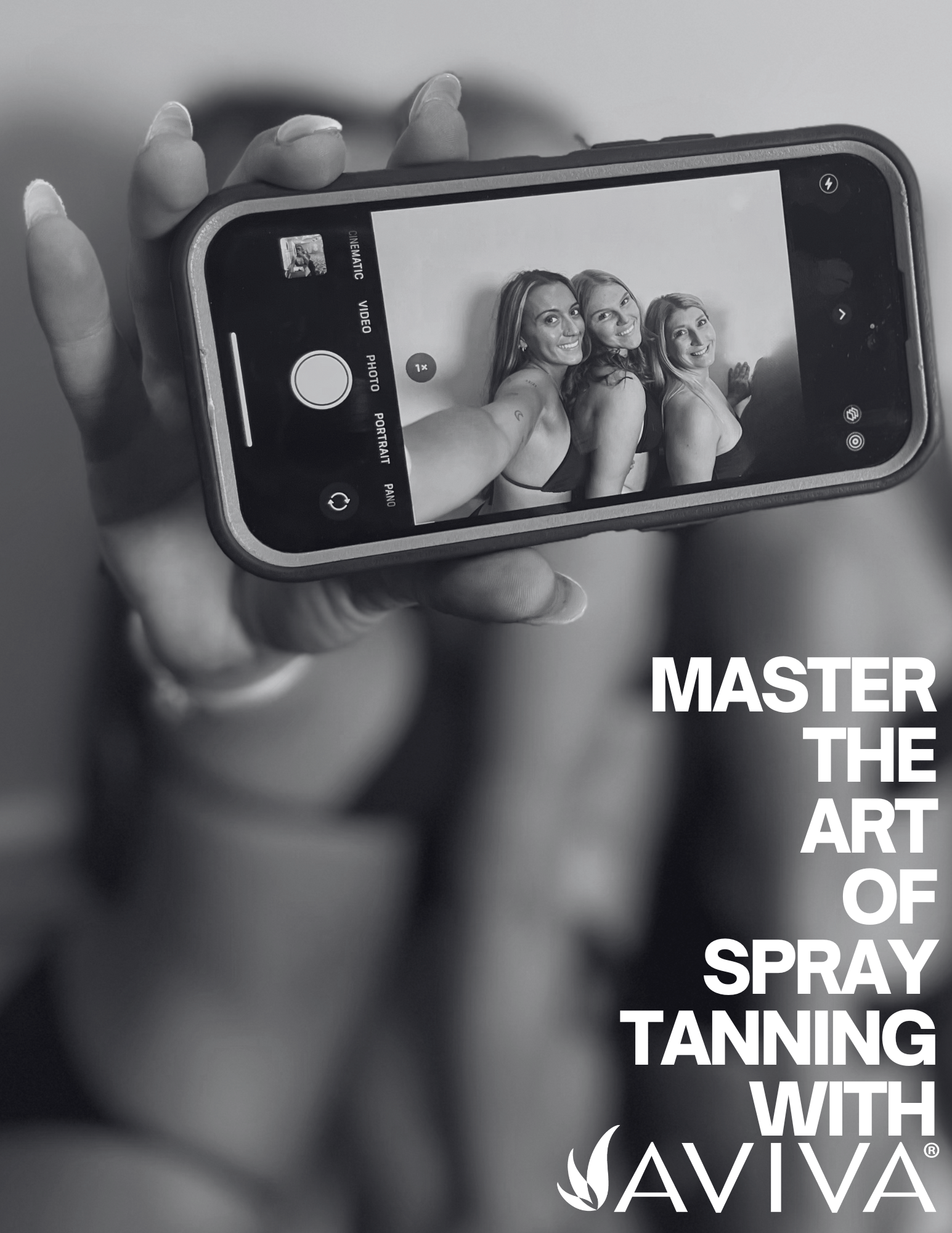Lisa Chapman has over 20 years’ experience in the beauty industry and was Managing Director of Aviva Labs UK. She has worked in London, Dubai and Paris. We asked her to share some of her tips for adding spray tanning to an existing salon:
“My specialty is in coaching salons and spas to double their existing sunless business. I am also passionate about sharing this knowledge with beauty professionals who want to add spray tanning to their services menu.
Sunless tanning is one of the most profitable services for beauty professionals to provide to their clients. Why?
Given worries about skin cancer and tanning beds, the sunless tanning industry is increasing in demand. In fact, according to a recent CNN Money Article citing an IBISWorld report, Self-tanning Product Manufacturing is one of America’s 10 fastest growing industries. Makers of bronzing lotions and sprays are expected to see their sales grow 18.1% in 2012 and it is forecasted that fake tanning products will grow to become a billion-dollar industry within the next five years. This is a fabulous time to add spray tanning services to your spa menu and capitalize on this opportunity.
My advice is that If you wish to make the most money from offering spray tanning, it is vital to have knowledge of the sunless tanning process and its’ limitations.
The active ingredient in virtually all modern day tanning solutions is DHA (Dihydroxyacetone). DHA was first recognized as a skin coloring agent in the 1920s. It is basically a simple starch and is often derived from sugar beet or cane. DHA is not to be confused with the food dye that is used to produce the ‘guide color’ in tanning solutions.
DHA is the most expensive ingredient within sunless tanning solutions. Cheap DHA will never deliver consistent quality results for your clients. I recommend using products that are manufactured using the highest quality, premium grade DHA.
How does DHA work? DHA is not a dye. It reacts with the Keratin in the dead cell skin layer to create pigments called Melanoidins. The reaction is known as the “Maillard reaction.” A spray tan is fully developed after 8 hours (or 4-6 hours with an express solution). Melanoidins are similar to Melanin which is the pigment created in your skin when it is exposed to sunlight.
An important fact to remember is that the life of a sunless tan is dictated by the speed with which your client sheds dead skin cells. This cycle can be anywhere from 5 to 10 days. This is why exfoliation prior to having a spray tan is important so that all the loose dead skin cells are removed to insure a longer lasting tan. Also, because you are starting with an even surface, you reduce the likelihood of a tan becoming patchy as it fades.
Beware that many exfoliators contain moisturizers or oils that act as a barrier and prevent the DHA from reaching the Keratin in the skin. It is important that your client is provided with an exfoliator that has been specifically designed for use in the sunless tanning process.
Just as important as pre-tan preparation is post-tan maintenance. You should recommend to your clients that they use a quality moisturizer that has been specifically designed for sunless tanning as many moisturizers contain ingredients that accelerate the skin cell shedding process.
Managing your clients’ expectations and allowing them to understand how the sunless tanning treatment works will insure that they get the best from the service you are offering and recommend you to their friends.
WYSIWYG ‘What You See Is What You Get
This term is usually associated with computers but also has relevance in the sunless tanning business. When a client has a spray tan the results are immediate. If you are using a quality spray tan solution, the client will usually be pleased to see their newly bronzed body.
This immediate result (the guide color) is created with food dyes that are contained within the tanning solution. This is often referred to as bronzer.
Remember, you are not around to see when your client showers at home later and see their actual spray tan results. If they are disappointed with their results, they have what Aviva Labs calls a Post-Shower Letdown.™ This has a bad effect on business because most often clients don’t call to tell you how they feel about their resulting spray tan. They just go elsewhere for their next spray tan.
Color balance is key. If the guide color that the client experiences immediately after their tanning treatment is nothing like the color post-shower, that client will be disappointed (or livid in the worst case) and you have lost the edge. That is this client will not be singing your praises to everyone they meet.
It is imperative to use a tanning solution specifically created to deliver a perfect match pre- and post-shower. Thus, the DHA tan will develop to exactly match the original guide color.
“I have lectured to beauty professionals all over the world. I always strongly impress to them that their success doesn’t depend on what treatments or products they provide clients if they don’t know the basics. You are the professional and your clients expect your knowledge to be greater than their own. I am not suggesting you give all your clients a science lecture, but informing them about the treatment you are providing is important in order for them to benefit fully. This is so true when it comes to sunless tanning,” Lisa advises.”

